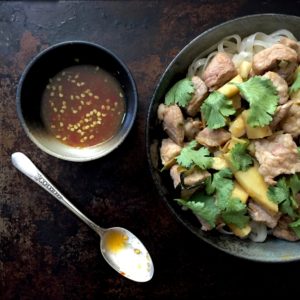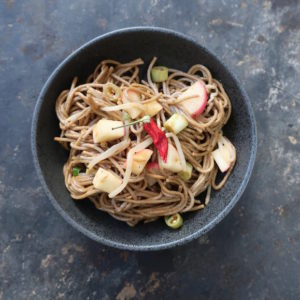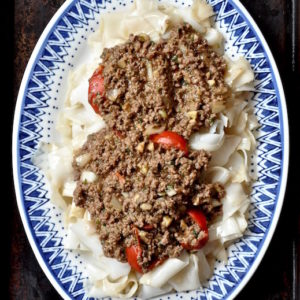Caregiver’s Noodles
You’re wondering what these are.

These thigmajigs, scmetchiks, whaddayacallits, are a crucial part of a wheelchair user’s day–that is, if the wheelchair user has a “swing-away” style footrest on his chair.
The above objects are called endcaps. Their job is to hold wheelchair footrests in place while allowing them to swing away in 180 degree arc, allowing easier transfers from beds or toilets or wherever a person might be that isn’t a wheelchair. Note they are plastic. Their narrow heads like to shear off, leaving the remainder of the cap sunken into the metal fitting.
You’ve never, ever thought of shit like this. Who would? I never did, until my husband began breaking endcaps regularly. A person can’t sit in a wheelchair that’s missing a footrest. And no, he can’t cross his legs for the day. If he could cross his legs, we wouldn’t be discussing any of this minutiae to begin with. We’d be chatting with our microwaves about hiding our tax returns.
This is how yours truly finds herself in the yard with a screwdriver, paper towels, and WD 40, winching broken bits of endcap from a wheelchair and muttering. It’s best not delve too deeply into Talking Heads lyrics, well, how did I get here and all that, because it’s just a hop, skip, and jump to jibbering lunacy from here, friends. And it ain’t even noon yet. Just screwdriver out the broken plastic and mop up with janitor grade ammonia. Drop in a new endcap from the bag of fresh ones. Drive the chair inside. Dress your husband. Lift him into chair. Affix footrests to endcaps. They make a unique sound as they swing into place, a sound known to wheelchair users and caregivers the world over, a high-pitched agreement of metal meeting metal: ka-thuck, ka-thuck.
—
Caregiver Noodles see the table most often after I help John shower and dress, a physically demanding routine leaving me ravenous.
The dish originated with Fuchsia Dunlop, who gives a recipe called Fuchsia’s Emergency Noodles in Every Grain Of Rice. Though it’s entirely different than what I offer here, it’s the recipe that introduced me to Chinese noodles, way back when, and I remain forever grateful.

Caregiver noodles have many iterations, some of them calling for ingredients available only in Asian groceries. Please don’t be deterred. Caregiver noodles are flexible and fast, meant to be assembled during the direst of hungers. They aren’t about sourcing things you’ve never heard of.

The only constants in my bowl are udon noodles, scallion, garlic, ginger, and a hit of something spicy: Sriracha, some crumbled dried pepper, or a few fresh hot peppers.

A protein component is always welcome after showering and dressing somebody who has thirty pounds on you. This protein varies–an egg, minced ham, and recently, a link of this Chinese-style sausage:

Yeah, I bang on and on about healthy eating and organics and PC pork. I can’t say this product is any of the above. Nobody is a saint all the time. Or at least, I’m not.
So, uh….moving along to other ingredients….I learned about rice cakes from Fuchsia Dunlop’s Land Of Fish And Rice. Dunlop recommends Korean rice cakes, which are sold in two-pound plastic bags where I live. I’ve seen them in oval or stick form. Until recently, I could only find these at Chinese markets, but my regular market recently began selling rice ovals and sticks, which look like so:

Not the best shot, but…

Rice cakes are bland, with an addictively chewy texture. I add them to stir fries and curries. They’ll keep about three weeks in the fridge, but I prefer freezing them in smaller bags. The sticks do take longer to reconstitute than the ovals–know that for a quick-cooking noodle dish like this one.
Pickled garlic: my pickled garlic comes courtesy of Carolyn Phillips’s All Under Heaven. I am currently eating my way through a large jar. I write this post in early March 2017, when fresh garlic is at its winter worst; the moment Spring’s garlic forms heads, some will find its way into a second batch of this ambrosial stuff. Meanwhile here is Carolyn’s recipe, from her blog. This is ridiculously easy to make. Go for it.

You can, of course, use plain old garlic in this dish with fine results.
About the Udon: you can prepare them properly, in a pot of boiling water, or be lazy, like me, and toss them into your wok with a half cup of broth. Both methods are presented in the recipe.
However you proceed, caregiver noodles pulls together quickly, is delicious, and can be eaten at all times of day and night. It’s fast, it’s kind to the digestion, and it’s a great way to use up leftovers or veggies. Use the right noodles and it’s vegan, vegetarian, and gluten free. What more do you want? And, most importantly, it’s wonderful, which you completely deserve after selflessly helping another person get ready for his day.

Caregiver Noodles
Serves 1 person; easily scaled upward
preparation time (assumes ingredients are not frozen) 20 minutes, tops
Please see notes, bottom, for discussion of alternative proteins, vegetables, and preparing Udon noodles.
1 link Chinese-style sausage, sliced into coins
1 fresh or pickled garlic clove, peeled and minced (see below for pickled garlic clove recipe)
1 scallion, peeled and minced
1 small piece of ginger, unpeeled, smashed, and minced
about 1 ounce rice cakes or sticks
about 2 tablespoons Shaoxing wine
about 2 tablespoons Nam Pla or soy sauce (not both!)
a bit of fresh hot pepper, optional
handful of vegetables, washed and sliced; I used radishes and bok choy here
4 ounces unsalted chicken broth
1 six ounce package Udon noodles
Peanut, sunflower, or canola oil for the pan
A 12-inch wok is ideal for this recipe. If you don’t have a wok, use the largest, deepest frying pan you’ve got.
If using a wok, set it on high flame. Add the oil. Turn the heat down a little and add the Chinese sausage, taking care to avoid spattering oil. Stir the sausage; watching carefully, as it likes to burn. Add the garlic, scallion, and ginger, stirring, for 30 seconds.
Add rice cakes or sticks, rice wine, nam pla or soy, and stir. The sausage should let down some fat, but if you need additional liquid, add more wine. The rice cakes like to stick a little. You can also add a bit of water if needed.
Add the hot pepper, if using, and whatever vegetables you are using. Stir fry, about 1 minute.
Add the broth and noodles, stirring, taking care to avoid anything sticking. Cook over high heat, about two minutes. Make sure the sausage and rice cakes are cooked through.
Dump everything into a bowl. Devour with no thought of sharing.
Notes: You can use just about any protein or vegetable that suits your fancy, including topping this with an egg. Add harder vegetables earlier in the cooking.
About preparing Udon noodles: conventional preparation calls for adding Udon noodles to boiling water, and this is the correct way to cook them. My shortcut, above, is unconventional and inauthentic, but it’s fast.
Variations are endless: All manner of Asian hot sauces can be used–Sriracha, dried hot peppers, sambal oelek, Gochujuang, whatever you like. Don’t forget sesame oil or quality soy sauces, either.
The recipe for pickled garlic cloves comes from Carolyn Phillips, and appears in her book, All Under Heaven, an absolute must, must have for any Chinese food lover.





